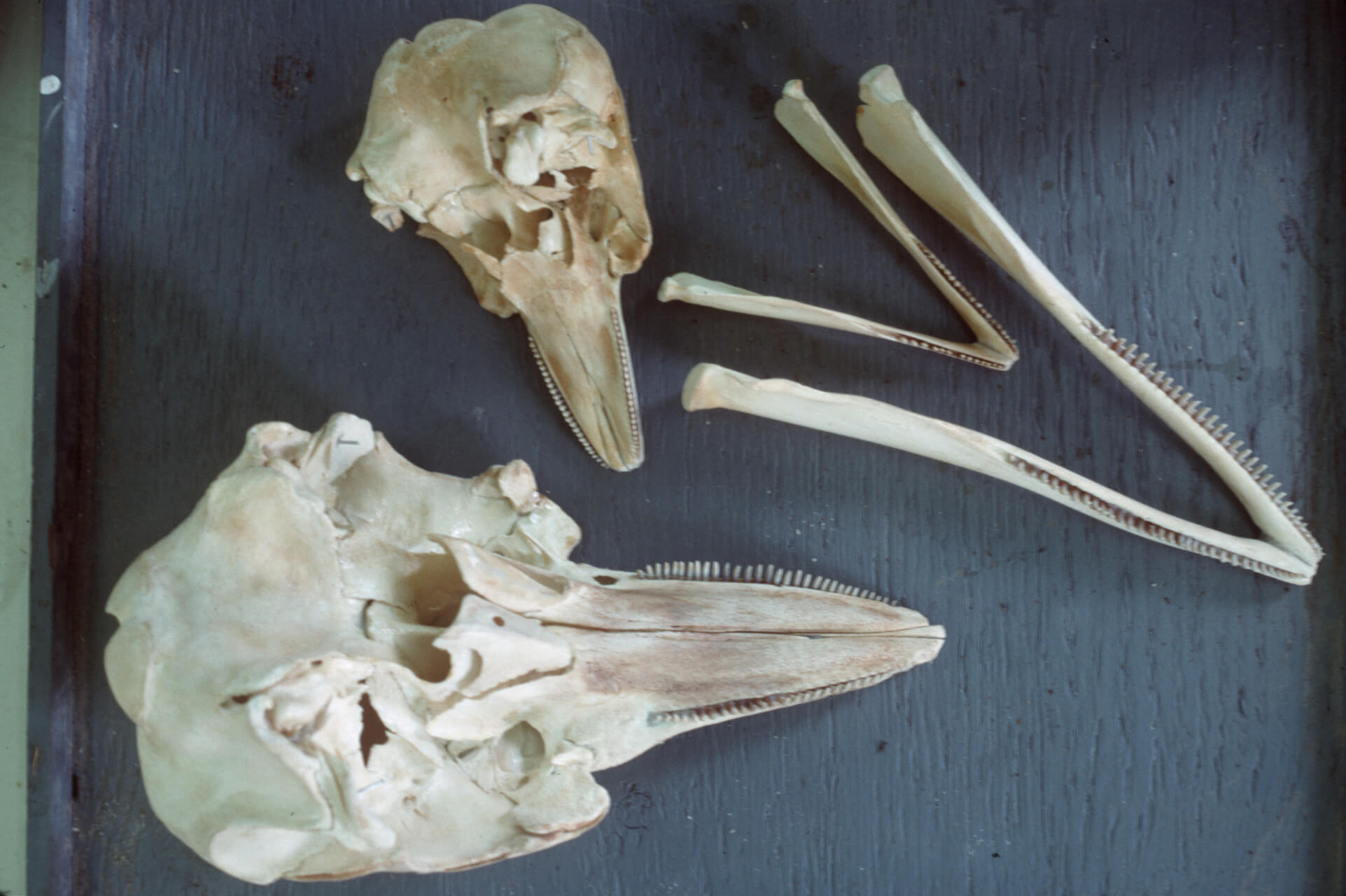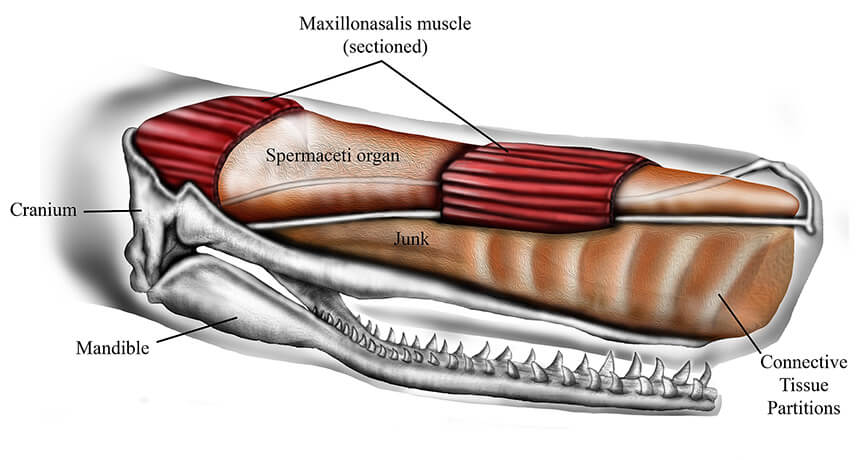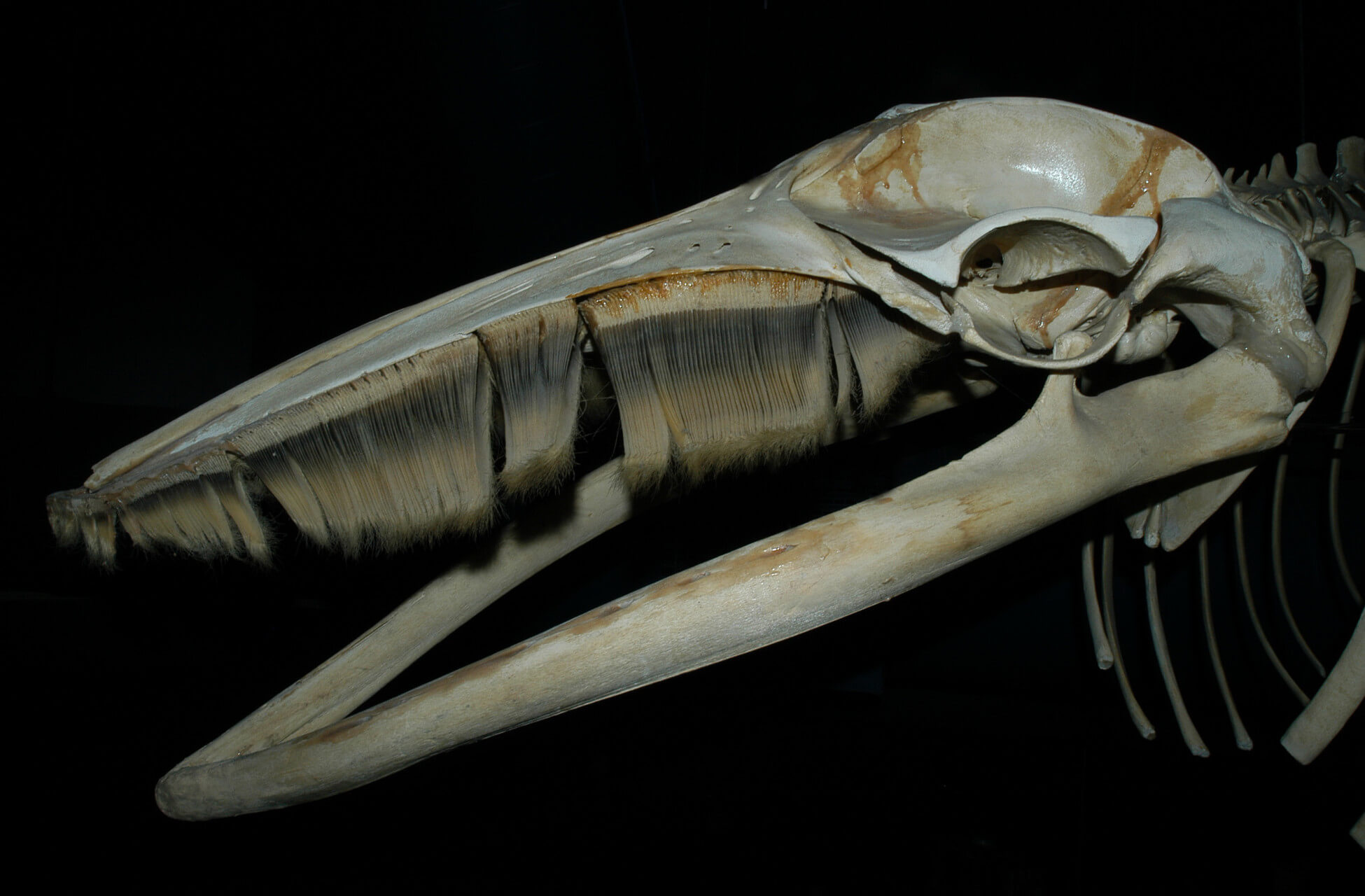From odontocetes to mysticetes, whale anatomy varies from one species to another, even with regard to their heads! The sperm whale, for example, has an elongated, rectangular head, while the beluga’s is rather spherical in shape. One might wonder whether this variable anatomy influences the brain or where this organ is located. Whales Onlinetakes a deeper look into these questions.
One thing is for sure, the anatomy of whales is very different from that of humans! It would be wrong to assume that cetaceans’ skulls and brains are located directly above their jaws, as is the case in humans. In this regard, the sperm whale and the beluga both warrant closer study.
Sperm whale
The sperm whale lives up to its scientific name, Physeter macrocephalus, which means “big head.” Measuring up to 18 metres long and weighing up to 50 tonnes, the anatomy of this giant easily sets it apart from other species. It is also the largest of the toothed cetaceans, in addition to holding the title for the most massive brain in the animal kingdom, weighing up to 9 kg! However, it is not found in the space above the jaw, but rather behind the eyes, where its skull hides. As can be seen in the illustration of Ali Nabavizadeh, the top of the jaw is composed of fatty and muscular tissues. The melon, the spermaceti (from which the species derives its name), and muscles are found here. These organs are used for emitting sounds for echolocation.
Beluga
The emblematic white whale of the St. Lawrence generally measures between 2.5 and 4.5 metres (max. 5 metres) and weighs between 0.7 and 1.5 tonnes on average . Its brain is clearly smaller than that of the sperm whale. But, just like its cousin, the beluga has an organ called the melon located above its upper jaw. It is precisely this organ – which is unique to toothed whales – that makes its head so round. Thus, the beluga’s cranium is located farther back in its head, as shown in the illustration from the National Oceanic and Atmospheric Administration (NOAA).
And the others
Since baleen whales lack a melon, their heads have a more slender and more elongated profile. Compared to toothed whales, baleen whales have smaller brains relative to their body size. However, their skull and brain are still located behind their eyes, just like in belugas and sperm whales!
Does size matter?
In and of itself, brain size is not directly proportional to cognitive ability. A larger brain does not necessarily translate into superior intelligence. In research, scientists instead use the encephalization quotient (EQ), which represents the ratio between the actual size of the brain and how large it might be expected to be given the size of the animal overall. In humans, the EQ is between 7.4 and 7.8, meaning that the human brain is about seven times larger than one would expect given our body size. Incidentally, humans have the highest EQ of any animal, followed by odontocetes. A few species of toothed whales, including dolphins, also have fairly high EQs of between 4 and 5, which is higher than those of primates. On the other hand, all species of baleen whales have a ratio of less than 1. Lastly, studies reveal that in all cetaceans, brain size changes as they evolve. These changes indicate that these species have adapted to their environment that requires them to process large volumes of information, as well as to the demands of pod life such as communication, cooperation and competition.








